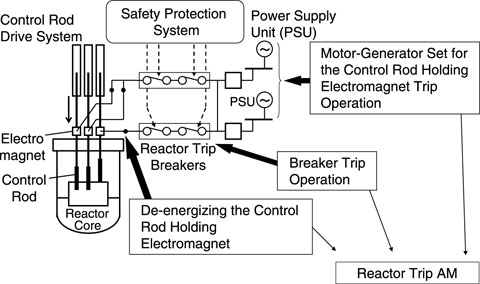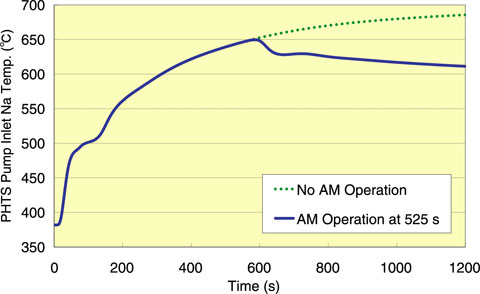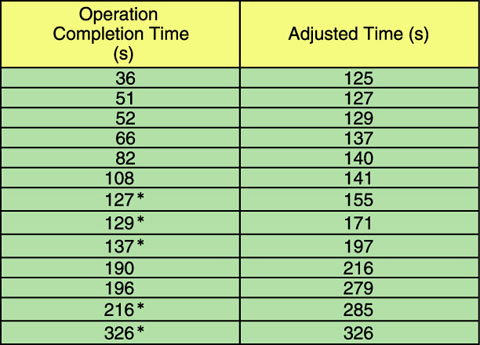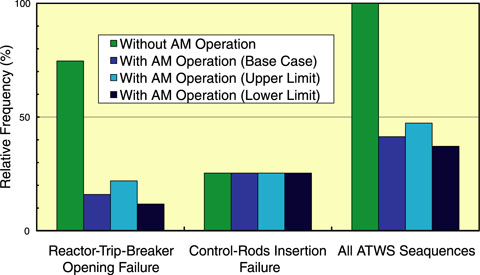
Fig.1-10 Schematic diagram of reactor trip AM

Fig.1-11 Inlet sodium temperature PHTS pump in the case of ULOHS
Table 1-1 Simulator training results


Fig.1-12 ATWS frequency reduction owing to reactor trip AM operation
This section describes a method and an application of quantitative evaluation of accident management (AM) reliability for the “MONJU” fast breeder reactor in the event of a reactor trip failure, as shown in Fig.1-10; this evaluation is based on the probabilistic safety assessment (PSA) technique. There are two types of event sequence categories of Anticipated Transient Without Scram (ATWS): failure of reactor trip breakers’ opening function and control-rod-insertion function. Therefore, Primary Heat Transport System (PHTS) pump operation is maintained, and reactor-trip AM reliability can be expected to be high in the former case because this case has longer allowable time than other cases.
Using the present method, the allowable time can be estimated on the basis of plant-transient-response analysis using the Super-COPD code that was developed for use in obtaining the best estimates of the plant dynamics of “MONJU”. In this allowable-time estimation, the temperature is considered to be 650 °C, which is the potential sodium temperature corresponding to PHTS pump failure. The assumed AM operating procedure in the analysis condition only involves de-energizing of the control rod holding electromagnet because this procedure can be performed in the main control room. The probability of failure of an operator involved in AM, within the allowable time was estimated on the basis of the time records obtained from simulator trainings, as shown in Table 1-1.
Application of this method in “MONJU” resulted in the estimation that the allowable time for an Unprotected Loss-Of-Heat Sink (ULOHS) event that is a representative ATWS event sequence would be about 8 min as shown in Fig.1-11, and this estimated allowable time was more than the longest observed allowable time of 5 min even after considering the uncertainty of the analysis conditions.
The operation failure probability would be less than 0.1 even after taking the uncertainty into consideration. The reliability of the de-energizing operation in an ULOHS event that is initiated by the failure of a reactor trip breaker to open can be evaluated quantitatively from these estimation results.
Using the abovementioned information, it is shown that in the case of a level-1 PSA, the total frequency of ATWS that is core damage accompanying a reactor trip failure at “MONJU” could be decreased by at least 50% by reactor trip AM even after considering the uncertainty, as shown in Fig.1-12. Thus, the reactor trip AM reliability is verified.